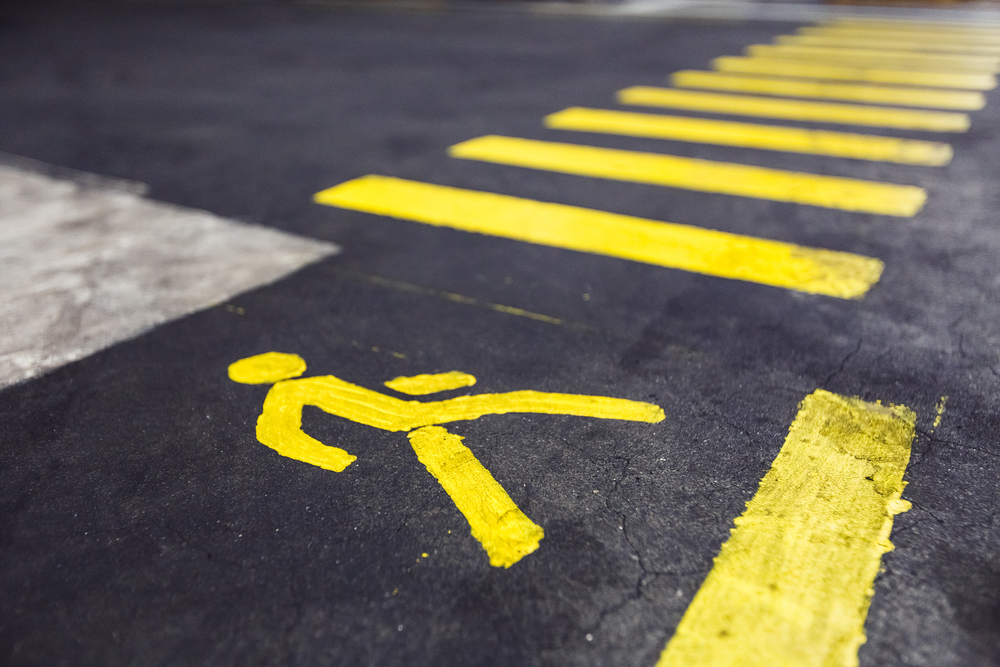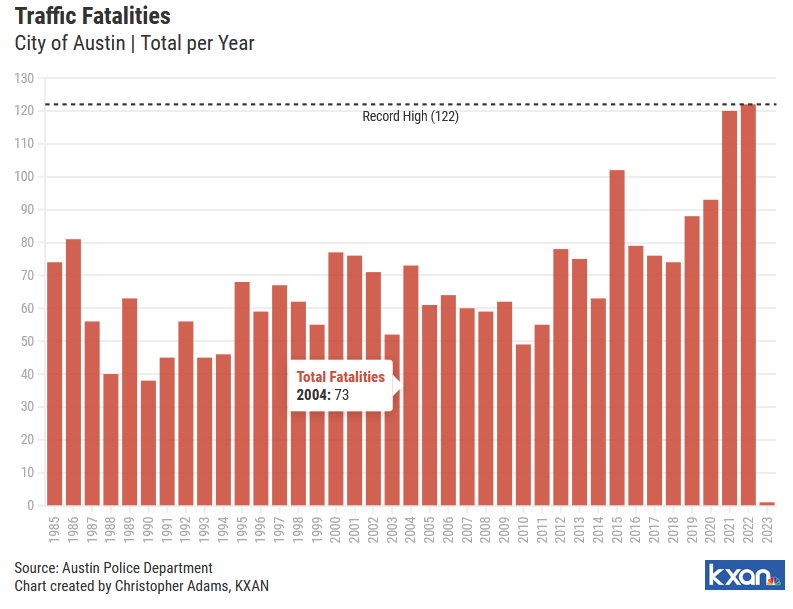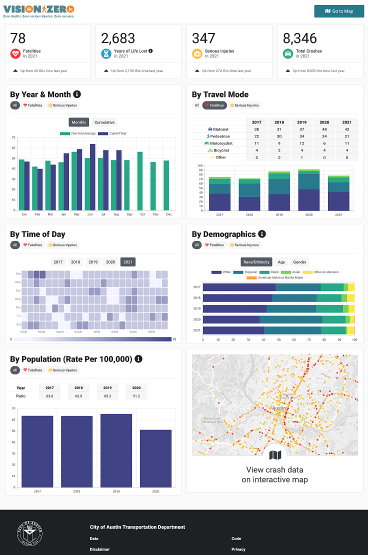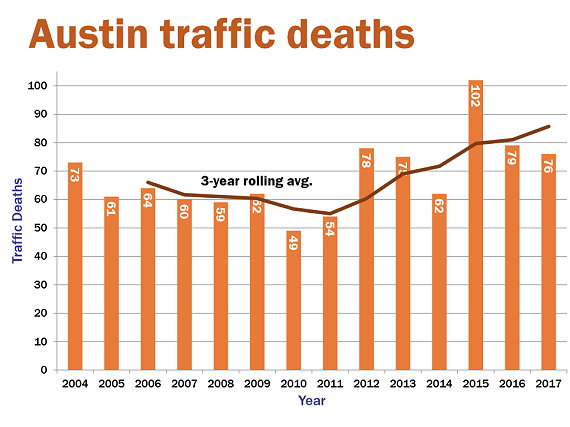Many cities have responded to these grisly numbers by unveiling so-called Vision Zero initiatives. The name refers to stated goal of reducing the number of people killed in traffic accidents to zero. After all, as we’ve discussed before, it is a somewhat perverse quirk of American culture that we have normalized the deadliness of automobiles. But that may be changing. Last October, the city of Dallas joined with its peers around the nation and revealed its own intention to work toward a Vision Zero Action Plan. The city hopes to unveil that plan by December 2021, or after an estimated 140 more pedestrians are killed by motor vehicles in Dallas.
There are problems with Vision Zero, however, and one of the big ones is that many cities’ plans aren’t seeing results.
Last year, CityLab looked at five big cities that were early Vision Zero adapters. Three of five cities with Vision Zero plans showed modest reductions in fatalities, while two—Los Angeles and San Francisco—saw increases. Overall, none of the cities were reducing fatalities at a rate that could realistically hit zero deaths for decades.
Does that mean that Vision Zero plans are wasted efforts? I’m not so sure. Vision Zero Plans seem to illustrate just how deep the problem of traffic safety runs. As Laura Bliss, director of the Vision Zero Network, told CityLab, Vision Zero Plans require a “transformative shift in how you’re doing business on the issue of mobility.” Transformational shifts, however, are difficult to realize, particularly in a country that has long baked the car’s priorities into the many laws and cultural assumptions governing urban forms.
However, Vision Zero can work. In fact, there is a city that has already achieved it, though unsurprisingly, it is not an American city. In 2019, in Oslo, Norway, there were exactly zero road deaths for pedestrians and cyclists. There was one traffic-related death—a driver died when crashing his car into a fence. This reduction to zero came after a prolonged effort by local officials to implement a variety of new street improvements and measures designed to make streets safer. And despite some strong push-back against the effort, Oslo has managed to hit that elusive dream of zero traffic related deaths for cyclists and pedestrians.
How did they do it? Admittedly, Oslo started as a smaller and much safer city than somewhere like Dallas. But the city, which is about the same size as Portland, once recorded as many as 41 traffic-related deaths, and a decade ago, there were about 10 traffic-related deaths per year. That was still too high for many Oslo residents. In 2015, city officials passed a plan that restricted cars in its city center and introduced new fees for parking in the city’s core. The city removed parking spaces, replaced them with bike lanes and pocket parks. They also reduced speed limits on city streets outside the center, expanded its overall bike network, and created zones that reduced the presence of cars around schools.
From an urban design perspective, the strategy was fairly straightforward: figure out how to separate cars and people as much as possible while expanding mobility for pedestrians and cyclists. And yet, even in a Scandinavian city like Oslo, realizing this was a challenge. Oslo’s business community fought hard against the car ban, but city officials persevered. Their efforts saved lives.
It is difficult to imagine such a scene playing out in Dallas. The streets here are larger, faster, and more dangerous; the political pressures are more intense; the culture around pedestrian, bicycles, and street life is less developed and entrenched. It would cost millions—if not billions—to redesign the streets to make them safer, and yet the city can hardly keep streets paved and free of potholes.
But Olso does offer Dallas a valuable lesson. Making streets safer isn’t simply about urban design—bike lanes and road diets and the rest. At its heart, it is a political challenge. Until American cities can stand up to entrenched political forces that perpetuate an urban model that favors vehicular movement over people’s lives then American Vision Zero plans will have limited success. In order to be effective, Dallas’ forthcoming Vision Zero Plan will have to be bold and politically risky. Anything less will be equivalent to saying that it is okay that 70 of our neighbors will die this year because of dangerous streets.
By Peter Simek Published in FrontBurner January 6, 2020 11:24 am
 January 3, 2020 – AUSTIN, TX — Austin police made more than 270 DWI arrests during the holiday period, law enforcement officials revealed on Wednesday.
January 3, 2020 – AUSTIN, TX — Austin police made more than 270 DWI arrests during the holiday period, law enforcement officials revealed on Wednesday.





